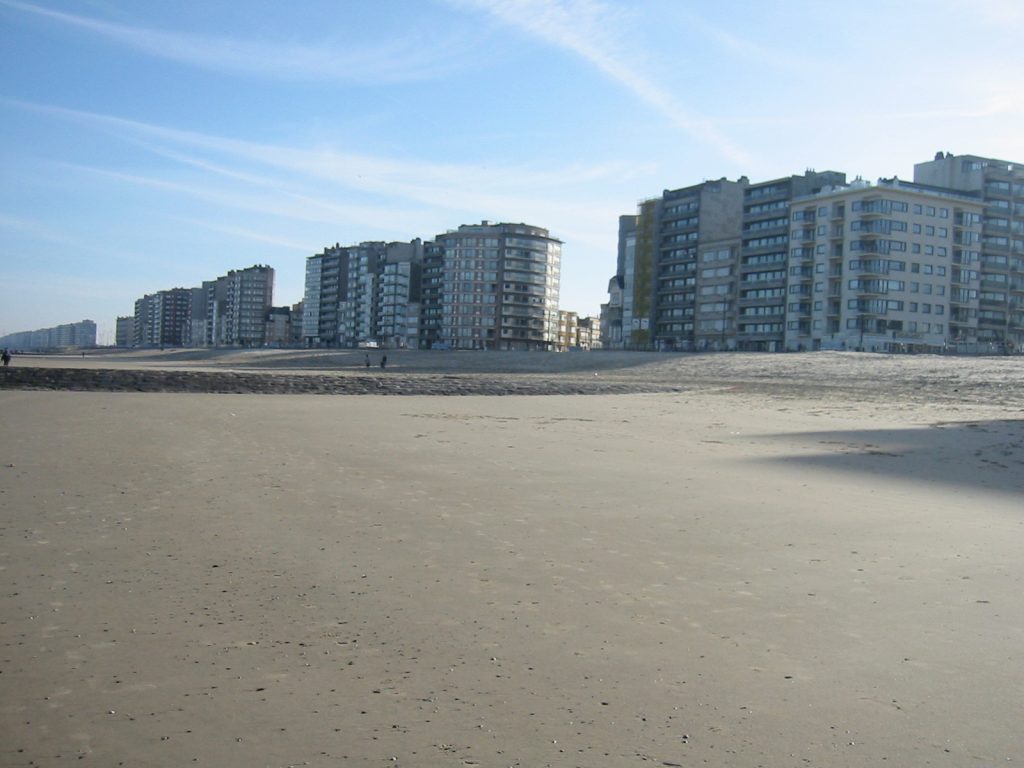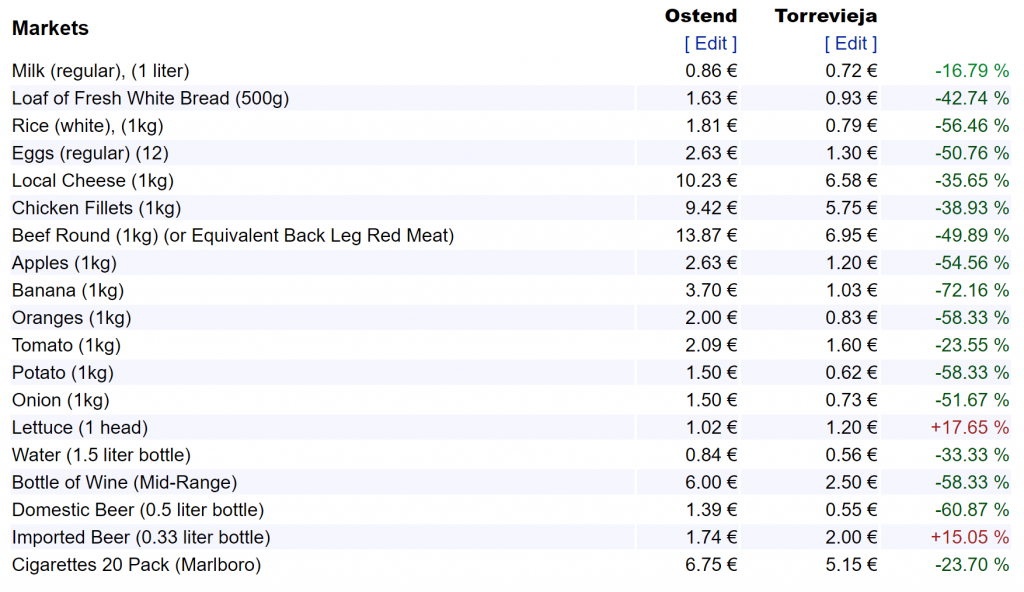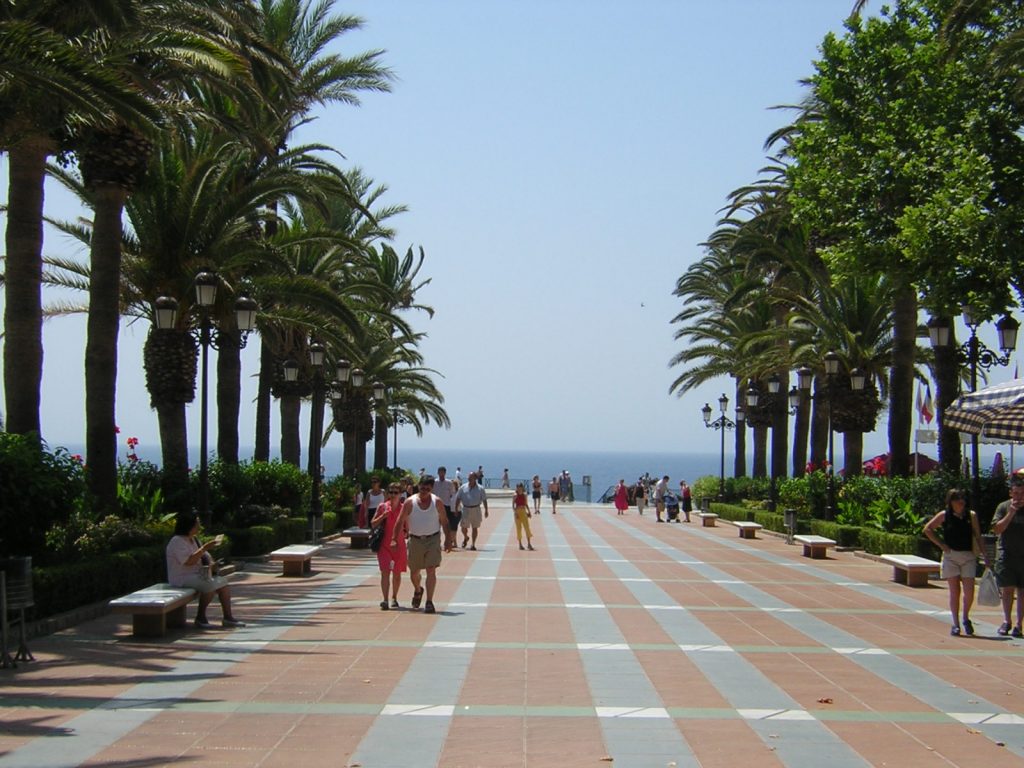Buying a second home on the Belgian or Spanish coast: the ultimate comparison
You want to buy a second residence and one thing is certain: the first three items on your wish list are 'sun', 'sea' and 'beach'. Yet you are still unsure where that new dream home should be located. Do you prefer the Spanish coast, the corresponding 320 days of sunshine and pleasant temperatures even in winter? Or still for 't Belgian sea, where you are closer to home and where Familie faithfully appears on the television every evening.
You don't make that decision between the soup and the French fries. On the contrary, it goes without saying that you should think about it carefully and consult with your family members. To give you a leg up, below we compare the Spanish coast with the Belgian coast. Up to you to draw your conclusions.

1. WEATHER: 320 days of sunshine versus fearful anticipation
The Belgian coast has a temperate maritime climate with mild winters and relatively warm summers. The average there in July is 21 degrees. That average masks seasonal variations in temperature. We don't want to make a living out of them, the sunbathers who are surprised by an unexpectedly inclement northerly wind. Those needing to sprint toward a souvenir shop on the dike to take shelter from beating rain. Or who are already shivering on the beach and only thaw after generously administering hot chocolate.
Indeed, on the Belgian coast you are best prepared for the four seasons in one day, even in the middle of summer.
Then we're just talking about summer. In winter, the average temperature on the Belgian coast is six degrees. And although the sun shines more at the seaside than in the rest of our dreary little country, it only allows itself to be spotted for two hours a day in winter. Rain is always there, winter or summer, averaging 14 to 20 days per month.
On the Spanish costas, you often don't need an extra sweater even in winter. The Costa Blanca and Costa Del Sol often record temperatures close to or just above 20 degrees even in December and January. Even in the doldrums of winter, you drink your morning coffee outside on your patio. And the sun always shines on the southern coasts of Spain: about 320 days a year. Get that factor 30 sunscreen on!
2. PRICE: twice as expensive in Belgium
The average price of apartments on the Belgian coast rises faster than your blood pressure at the sight of those same prices. According to the real estate barometer of the Federation of Belgian Notaries, you paid an average of 276,605 euros for a coastal apartment in the first six months of 2019. That's about 50,000 euros more than the average Belgian apartment and 6.2 percent more than in 2018. A dyke apartment costs an average of 345,654, 6.6 percent more than in 2018 and even more than 20 percent more than in 2014. The most expensive residences are in Heist-aan-Zee and Knokke: 331,927 euros for an apartment and 516,527 euros for one with sea view. Average! In other words, the outliers are still much higher.
With such a short Belgian coast, it is logical that the supply of real estate there is under strong pressure. Demand exceeds supply. In Spain, this is not the case. Thanks to more than 7000 kilometers of coast (114 times more than Belgium!), there is enough for everyone. Consequence: for the same budget you can buy a house with a larger living space, more rooms and often a swimming pool. You even get the sun for free.
For the price of a cramped flat in Ostend, Middelkerke or De Panne, for example, you can find a modest villa in Torrevieja, Estepona or La Zenia. If your budget is a bit lower, you can opt for an apartment. Prices of 120,000 to 150,000 euros for new and spacious apartments are no exception. Or how about our super deal? A newly built two bedroom apartment under 90,000 euros, where do you still find that on the Belgian coast? Nowhere, or you would have to settle for a cardboard box under a bridge.
3. THE CUSTOMS SELF: elaborate, beautiful and natural versus "a concrete wall"
A few years ago, there was a minor riot between the Netherlands and Belgium when the Dutch nature organization Natuurmonumenten took to the Belgian coast "to whining" called. "That's why all those Belgians come here," the organization sneered. "It's bad to say, but I've never met a Belgian who disagrees. There is no quality landscape anymore." When the Dutch Minister of Infrastructure announced the easing of building regulations on the coast, the entire country was on its hind legs. Then the Dutch coast will become like the Belgian, it sounded, "a concrete wall." The plans were quickly swallowed.

A case of jealous Hollanders? Yet not. When De Standaard polled its readers about the ugliest place in Belgium, the coast easily emerged as the winner. "Those who travel by boat along the Belgian coast see the facade of our country: a mix of ugly concrete blocks with no soul and no style," one reader argued. And when study bureau Ipsos took a closer look at four traditional vacation destinations of Belgians - in addition to the coast, the Ardennes, France and Spain - the Belgian coast scored below average in all areas. One conclusion was that few beautiful landscapes remain. Which leaves few opportunities to rest and enjoy.
We're not going to claim that there isn't a strip of concrete to be found on the Spanish coast, but nature has more room to breathe there. Between the touristy beaches of the famous resorts are less crowded beaches with hailstorm sand, cliffs and hidden coves among the rocks. Spain has hundreds of Blue Flag beaches. In some places the mountains run down to the sea. In most seaside resorts, high-rise buildings are limited and you can still find the charm of the old fishing villages. Try finding that feeling in one of those aviaries on the dike in Belgium, while the wind blows sand on your waffle with whipped cream.

Don't miss out on the glittering boats of a glitzy coastal town like Marbella. Further inland are petite villages among almond and orange groves, where time stands still and siesta is sacred. You will also find mountain ranges, natural parks, forests and lakes, with a phenomenal wealth of fauna and flora. For example, the province of Malaga, near the Costa del Sol, has thirty protected natural areas. In Reservatauro, near Ronda, bulls and thoroughbred Spanish horses graze in pastures with ancient oaks. In Lobo Park, in Antequera, the wolf hides. And pink flamingos also feel perfectly at home in Spain, including in the Mar Menor and Laguna de Fuenta de Piedra. Not to mention the maritime paradise that lurks on the other side of the coastline, in the water.
4. Yield: higher in Spain
Real estate prices are also rising in Spain. On the Costa Blanca, prices went up by six and nine percent respectively in the last two years. Yet those sales prices are still a quarter to a third below the 2017 maximum, indicating that there is still quite a bit of stretch. So buying now equals guaranteed returns.
Keep in mind that there are also costs associated with selling, so consider a home in Spain as an investment that will pay off in the long run. In the short term, however, you can rent out during times when you yourself are not present. There are companies that will take all the hassle out of your hands: from taking reservations and cleaning to receiving guests and keys, they do it all in exchange for a percentage of the proceeds.
5. TIMING: now is the moment to buy in Spain
As we indicated in the previous point, there is still margin on the purchase prices of Spanish real estate. Rising prices are still predicted in the coming years. In other words, the return is guaranteed. If you have a war chest, now is a good time to invest that money. After all, savings bring in virtually nothing. Especially given inflation, your money in your savings account is shriveling away like an apple that has been in the fruit basket too long.
In this blog post, we list in detail why 2020 is a good time to buy property in Spain.
6. LIVING STYLE: quiet and inexpensive versus rushed and expensive
On the dyke of the Belgian seaside towns, you pay four euros for a lukewarm cappuccino. When you walk out of the tavern, the sea sand blows unpleasantly into your face. As you struggle down a k-way, a sassy toddler in a gocart nearly mows you down. Later that day, a seagull steals half of your pack of weak and overpriced fries. In short: by the end of the week, you are so fired up and stressed that you are glad to be able to go back home.
What a contrast with Spain. For starters, that country is just about the cheapest in Western Europe. You can barely find a coffee over two euros. The smile gets you in for free. A menú del dia, the typical daily dish that often consists of three courses, will usually not make you lose more than ten to fifteen euros. Often includes drinks and coffee. Even with a beer or a glass of wine, you get a small snack, the famous tapa. By comparison, visiting a restaurant is 48.50 percent cheaper in Torrevieja than in Ostend.



Groceries are also a lesser drain on your budget in Torrevieja, 43, 94 percent less to be exact. Fresh vegetables, fruits, meat and fish, olive oil, wine and jamón, you pay a fraction of what they cost at our place. And the Spanish diet is one of the healthiest in the world. It is certainly no wonder that Spaniards live longer than the residents of any other European country.
But in Spain, it's not just about cheap and healthy. The lifestyle there also runs a tad slower than ours. Spaniards take their time for everything, whether it is for a coffee on a terrace, an extensive lunch, their siesta or a pint at a café. They definitely don't let themselves be rushed. Add to this the fact that Spanish cities are made for strolling and that the Spaniards have elevated their fiestas to an art form, and you realize: here you will live to be a hundred years old with telling ease.

7. MOBILITY: at ease vs. in traffic jams
As soon as the first sunshine chases away the winter, the E40 is clogged with day-trippers and frigoboxtourists on their way to the Belgian coast. At Jabbeke, progress is so slow that even a snail would be slightly embarrassed. Baking, sweating and puffing in a hot car, while stressed-out rabbits in other lanes struggle with the concept of zipping - no, it's not our idea of a carefree vacation.
Then I'd rather get off the plane like a tourist under a pleasant Spanish sun. Instant vacation mood! As soon as the corona crisis blows over, you can fly again from Zaventem, Charleroi, Ostend, Deurne or Liège to all the corners of your promised land. In the same time that you cart from Limburg in Belgium to the sea, you can already enjoy a terrace on the Costa Blanca or Costa del Sol.
8. GUESTNESS: cordial vs. surly

Remember the cappuccino from item 6. On the Belgian coast, it is usually thrown on the table by a waiter who obtained his certificate of customer-friendliness in the former Soviet Union. Not so in Spain, where hospitality is in the nature of the locals.
Spaniards are a bit more old-fashioned than us, in the best possible way. Here, age is still respected and families are sacred. Just go out to a restaurant on a Sunday afternoon and you'll understand what we mean. They are friendly people who always have time for a chat about small talk. Who want to proudly introduce tourists to their culinary gems. Who don't chase their watches and spontaneously offer help to strangers.










